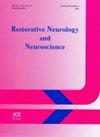EEG -guided Characterization, Monitoring, and Therapy for Neurological and Neurocognitive Sequelae of COVID‐19 and Long COVID
IF 1.6
4区 医学
Q4 NEUROSCIENCES
引用次数: 0
Abstract
The long-term effect of the newly emerged COVID-19 (SARS-CoV-2) virus has not been fully understood. It has been reported that several patients experienced neurological and neurocognitive problems after getting infected by the COVID-19 virus. This paper will review how the COVID-19 virus has impacted the brain, will aim to detect the location of COVID-19 in the brain, and will determine if the neurological complications are a result of “direct” or “indirect” effects of the virus on brain cells. Additionally, we will focus on the neurocognitive impact of COVID‐19 and the potential of digital electroencephalography (EEG), quantitative EEG (QEEG) and standardized low resolution brain electromagnetic tomography (sLORETA) to be able to capture, assess, monitor, characterize and facilitate the treatment of both neurological and neurocognitive sequelae seen in COVID‐19 and long COVID.脑电图引导下对COVID - 19和长COVID的神经和神经认知后遗症的表征、监测和治疗
新出现的COVID-19 (SARS-CoV-2)病毒的长期影响尚未完全了解。据报道,几名患者在感染新冠病毒后出现了神经和神经认知问题。本文将回顾COVID-19病毒如何影响大脑,旨在检测COVID-19在大脑中的位置,并确定神经系统并发症是病毒对脑细胞的“直接”或“间接”影响的结果。此外,我们将重点关注COVID - 19的神经认知影响,以及数字脑电图(EEG)、定量脑电图(QEEG)和标准化低分辨率脑电磁断层扫描(sLORETA)的潜力,以便能够捕获、评估、监测、表征和促进COVID - 19和长期COVID中出现的神经和神经认知后遗症的治疗。
本文章由计算机程序翻译,如有差异,请以英文原文为准。
求助全文
约1分钟内获得全文
求助全文
来源期刊
CiteScore
5.40
自引率
3.60%
发文量
22
审稿时长
>12 weeks
期刊介绍:
This interdisciplinary journal publishes papers relating to the plasticity and response of the nervous system to accidental or experimental injuries and their interventions, transplantation, neurodegenerative disorders and experimental strategies to improve regeneration or functional recovery and rehabilitation. Experimental and clinical research papers adopting fresh conceptual approaches are encouraged. The overriding criteria for publication are novelty, significant experimental or clinical relevance and interest to a multidisciplinary audience. Experiments on un-anesthetized animals should conform with the standards for the use of laboratory animals as established by the Institute of Laboratory Animal Resources, US National Academy of Sciences. Experiments in which paralytic agents are used must be justified. Patient identity should be concealed. All manuscripts are sent out for blind peer review to editorial board members or outside reviewers. Restorative Neurology and Neuroscience is a member of Neuroscience Peer Review Consortium.

 求助内容:
求助内容: 应助结果提醒方式:
应助结果提醒方式:


